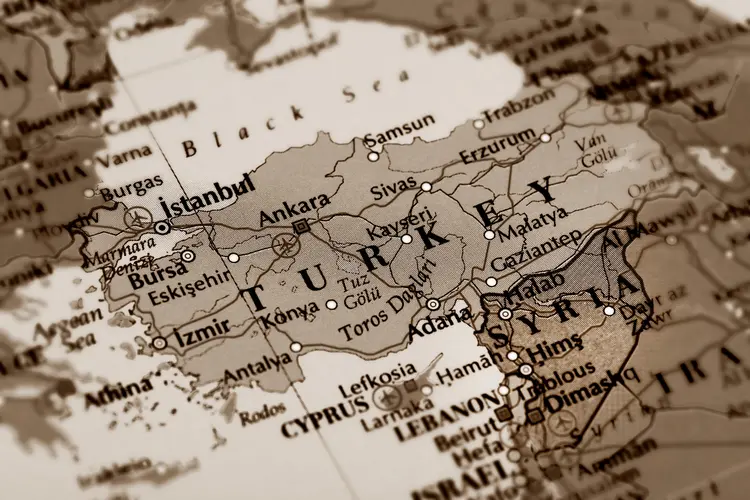
Digital Map Provides Interactive Lesson on Telegraph History
Media Inquiries
Before Andrew Carnegie became the industrialist he’s remembered as today, he worked for an early telegraph company in Pittsburgh as a messenger boy. When the first telegraph office opened in Pittsburgh, it was the westernmost telegraph office in North America, as shown by a new digital map created by Edmund Russell(opens in new window), the David M. Roderick Professor of Technology and Social Change in the Carnegie Mellon University Dietrich College of Humanities and Social Sciences Department of History(opens in new window).
For six years, Russell researched the history of the telegraph in the United States in order to understand the country’s first digital revolution.
“I started this project because of family history,” Russell said. “My great, great grandfather helped to build the first telegraph line across the West, which completed the transcontinental telegraph system. I learned that historians have only scratched the surface of telegraph history.
“I was drawn to the idea of a digital map because the history of telegraphs is a complex story, with many companies building lines at the same time in multiple places. I wanted to have a map with a time slider that would display change over time. In addition to being a research tool helping me understand a complex story, it would be a communication tool explaining what happened to others.”
The telegraph system relied on operators to send and receive each message. People who wanted to send messages went to a telegraph office, wrote their message on a piece of paper, and handed the message to the telegraph company with payment. A sending operator converted the message to code (usually Morse code) and sent it over a wire to an office in another town. At the receiving end, an operator translated the message from code to words and wrote the message on a piece of paper. Messengers delivered the paper messages (telegrams) to recipients. The heaviest users of telegraphs were business people and newspapers. Telegrams were expensive, so ordinary people used them only on special occasions.
Working with Lauren Winkler, a geographic information system (GIS) cartographer and 2006 graduate of CMU’s Information Systems Program(opens in new window), and Jonathan Kiritharan(opens in new window), web and applications developer for the University Libraries(opens in new window), they created “Uniting the States with Telegraphs from 1844-1862(opens in new window),” the first digital map of any telegraph system. The map shows changes in the telegraph system over time in an easily accessible and visible way.
“Helping Ed bring his research to life in our map has been one of the most fulfilling projects of my career, and it’s been made all the more special because Carnegie Mellon was where I was first introduced to GIS. It’s been such a pleasure working with Ed, and I hope this is the first of many such collaborations,” Winkler said.
Packed with various features, the map — which is free to use — shows users the variables that impacted the development of the telegraph system, including topographic features (such as elevation and rivers) and social aspects (such as crossing land owned by Native Americans). It tells which companies built each line and opened each station. One of Russell’s favorite features is the slider that can be used to manipulate the period of time displayed in the map.
In addition to being used by the public, the map can also be applied in K-12 classroom settings as part of local history lessons for students who live in areas where the telegraph was first established. Russell plans to develop modules for educators to use with students in primary and secondary schools.
“A free, publicly available map seemed like an ideal way to invite students to do original primary research on their towns and states,” Russell said. “Students can do what I did — search historical newspapers, which are free online, to find out when the telegraph arrived in their town, where the station was located and whether the town threw a celebration.”
Familiar with the Encyclopedia of the History of Science (ETHOS) project(opens in new window), on which the Chris Phillips(opens in new window), associate professor of history, had collaborated with the Libraries, Russell reached out to Keith Webster(opens in new window), the Helen and Henry Posner, Jr. Dean of the University Libraries, looking for a place to host the site.
Webster connected Russell with Kiritharan, who stepped in as a project partner to provide holistic technical support and expertise.
“I was able to work one-on-one with Lauren and Ed to provide assistance for any gaps that they needed help with including front-end edits, workflow process and web hosting support,” Kiritharan said. “We also aim to continue to support this project and offer it in a way that it remains sustainable for as long as possible. This includes a lot of challenges for web-based projects as internet technology continues to change. As a library, we try to make access to information our priority, and the University Libraries tries its best to provide access to unique projects that offer new or interesting perspectives on data like this whenever possible.”
Kiritharan also implemented security features such as obfuscating application programming interface (API) keys and connected Russell with Libraries colleagues who provided guidance on writing a copyright statement and selecting the right license for the site.
“Partnering with the Libraries ensures that a proactive approach to security and digital preservation is embedded into the project from the beginning,” Kiritharan said.


